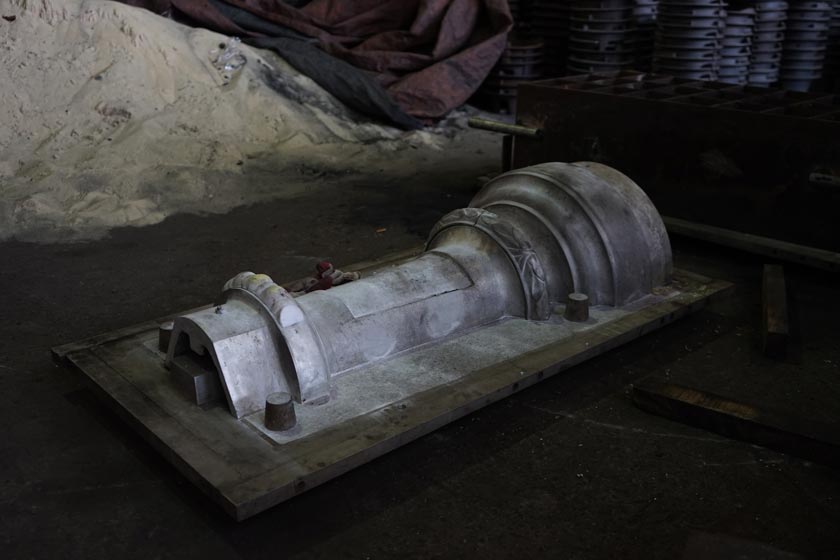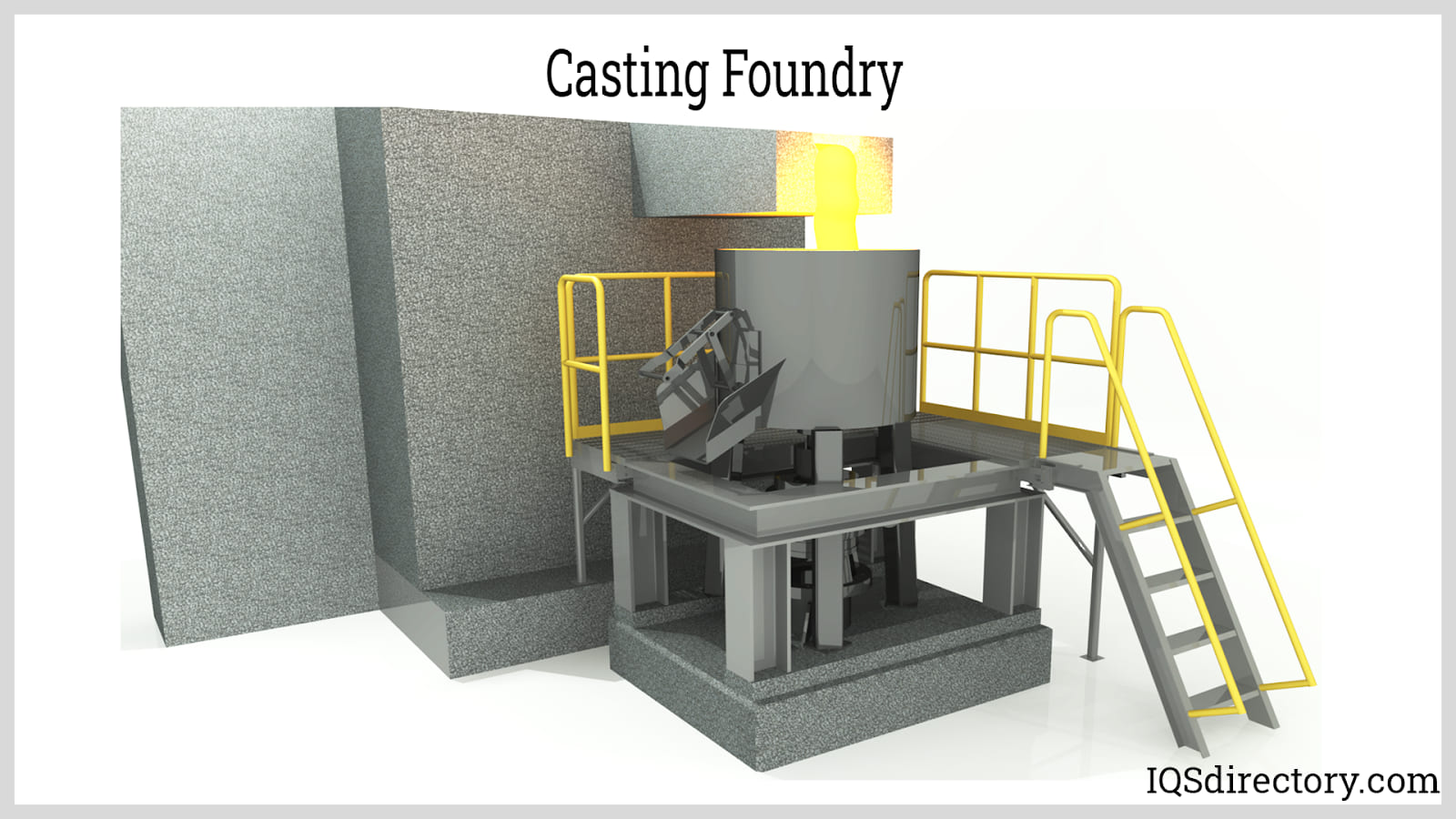Aluminum Foundry Wisconsin supports strong casting services
How Aluminum Foundry Contributes to Developments in Aerospace Design
Aluminum factories are essential to advancements in aerospace design. They generate lightweight, high-strength elements that are essential for modern-day aircraft. With innovative casting strategies, these factories develop complex geometries that enhance structural stability. Additionally, the growth of superior Aluminum alloys sustains the market's emphasis on gas efficiency and sustainability. Nonetheless, challenges stay in the production procedure. Recognizing these aspects exposes the extensive impact of Aluminum on aviation's future.
The Relevance of Lightweight Products in Aerospace Design
As the aerospace market proceeds to advance, the significance of lightweight materials ends up being significantly evident. The demand for effectiveness and sustainability drives designers to prioritize using materials that decrease general weight without compromising structural honesty. Light-weight products, particularly Aluminum, play an essential role in improving fuel effectiveness, enhancing payload ability, and enhancing the general performance of aircraft.
Moreover, the combination of these products enables for innovative styles, making it possible for makers to produce more aerodynamic shapes that can endure severe problems. The reduction in weight not just decreases operational costs but also contributes to a reduced ecological footprint, aligning with global initiatives toward sustainability in aviation.
Advanced Spreading Techniques in Aluminum Foundries
Advanced spreading methods in Aluminum foundries play an important duty in aerospace design by enabling the manufacturing of lightweight and specific components. Advancements in mold design and accuracy casting processes are vital in achieving perfect performance and architectural stability. Furthermore, the development of lightweight alloys enhances the total performance and effectiveness of aerospace applications.
Innovative Mold Style
Ingenious mold layout plays a vital role in the performance and effectiveness of Aluminum foundries, specifically within the aerospace industry. By leveraging innovative materials and techniques, modern-day mold and mildews can be engineered to withstand high temperature levels and stress, guaranteeing peak performance during the spreading process. These styles typically include complicated geometries that permit for the production of lightweight yet structurally audio components, important for aerospace applications. Furthermore, the use of computer-aided style (CAD) software program helps with accurate modeling, allowing foundries to fine-tune and replicate mold layouts before physical production starts. This not only enhances the high quality of cast parts yet also minimizes waste and lead times, resulting in substantial expense financial savings. On the whole, cutting-edge mold design is a foundation of development in Aluminum Foundry modern technology for aerospace design.
Accuracy Casting Procedures
The effectiveness of cutting-edge mold styles effortlessly incorporates with accuracy casting procedures, which are essential for producing top notch Aluminum parts in aerospace design. These processes, consisting of sand spreading, pass away spreading, and financial investment spreading, assure the creation of complicated geometries with limited resistances. Advanced strategies like vacuum cleaner spreading and stress die casting enhance the integrity and surface finish of the end products. Accuracy spreading decreases product waste while optimizing the mechanical residential or commercial properties of Aluminum, crucial for aerospace applications. Additionally, using real-time surveillance and progressed simulation tools during the spreading procedure permits immediate adjustments, leading to boosted high quality control. Collectively, these precision casting procedures placement Aluminum factories at the forefront of aerospace development, supporting the industry's need for integrity and performance.
Lightweight Alloy Development
As aerospace designers look for to enhance gas performance and efficiency, lightweight alloy development becomes a necessary emphasis in Aluminum factories. These shops utilize advanced spreading strategies to produce alloys that give exceptional strength-to-weight ratios. Technologies in alloy composition, consisting of the incorporation of aspects like lithium and magnesium, enable the manufacturing of materials that withstand severe problems while lowering overall airplane weight. Techniques such as die spreading and financial investment spreading facilitate the accuracy manufacturing of intricate shapes, which are vital for aerospace applications. Furthermore, continuous study aims to optimize these alloys for improved mechanical homes and boosted durability. By focusing on lightweight alloy development, Aluminum foundries considerably add to the advancement of aerospace engineering, leading the way for a lot more lasting and reliable airplane layouts.

Enhancing Architectural Integrity Via Aluminum Elements
Aluminum elements offer significant benefits in boosting structural integrity within aerospace design. Their lightweight nature adds to general efficiency while maintaining stamina, which is crucial for aircraft efficiency. In addition, the tension resistance residential properties of Aluminum help assure the durability and dependability of aerospace structures under different functional problems.
Light-weight Material Benefits
While standard materials typically jeopardize weight for stamina, utilizing Aluminum parts in aerospace engineering offers substantial benefits in structural honesty. Aluminum's lightweight nature contributes to general style efficiency, permitting for more structured aircraft that eat much less fuel, therefore enhancing sustainability. The material's exceptional strength-to-weight ratio warranties that components keep toughness without adding unneeded mass. This quality fosters enhanced efficiency and agility in flight, along with enhanced haul capacities. In addition, Aluminum's resistance to corrosion extends the lifespan of aerospace structures, lowering maintenance expenses and boosting safety. As makers increasingly adopt Aluminum alloys, the aerospace market experiences a transformative change towards much more efficient and reliable design services that focus on both efficiency and environmental obligation.
Anxiety Resistance Qualities
Although numerous products have one-of-a-kind properties, Aluminum's outstanding stress resistance stands apart as a critical consider enhancing the structural integrity of aerospace elements. This resistance plays a vital function in ensuring that airplane can hold up against numerous functional tensions, including fatigue, impact, and ecological problems. Aluminum alloys, particularly engineered for aerospace applications, display high tensile strength while preserving light-weight features, making it possible for designers to create extra reliable frameworks - Aluminum Foundry. In addition, the capacity of Aluminum to sustain cyclic loading without considerable contortion adds to the longevity and reliability of aerospace components. As innovations continue in Aluminum Foundry strategies, the growth of stress-resistant Aluminum components promises more enhancements in performance, safety and security, and effectiveness across the aerospace sector, strengthening Aluminum's role as a favored material in modern-day engineering
Gas Performance Improvements Driven by Aluminum Innovations
As the aerospace market seeks to boost gas efficiency, cutting-edge usages of Aluminum have emerged as a crucial service. Aluminum's light-weight nature significantly reduces airplane weight, enabling reduced fuel intake during trip. This reduction in weight Visit This Link is vital, as also small decreases can result in significant enhancements in overall gas economy.
Advanced Aluminum alloys, designed for boosted strength and durability, allow manufacturers to produce elements that keep structural integrity while decreasing mass - Aluminum Foundry. Furthermore, the assimilation of Aluminum in airframes and engine components assists in boosted the rules of aerodynamics, contributing to minimized drag and raised efficiency
The adoption of Aluminum in aerospace not only meets the demand for fuel-efficient layout yet also straightens with regulatory pressures for reduced exhausts. As these innovations remain to advance, they play a significant function in establishing brand-new standards for gas efficiency, making sure that the aerospace sector can meet expanding financial and environmental difficulties.

The Role of Aluminum in Sustainable Aeronautics Practices
The increasing emphasis on sustainable aeronautics methods has actually placed Aluminum as a crucial product in the mission for greener airplane style. Known for its lightweight residential properties, Aluminum significantly minimizes airplane weight, bring about reduced fuel intake and discharges. Its recyclability better enhances its sustainability account, as Aluminum can be recycled indefinitely without loss of top quality. This characteristic sustains a circular economic climate within the aviation field, minimizing waste and source deficiency.
Improvements in Aluminum alloys have actually boosted their strength and deterioration resistance, permitting for longer service life and reduced maintenance demands. These developments facilitate the advancement pop over to this web-site of more effective airplane frameworks, contributing to total sustainability efforts. In addition, Aluminum's thermal conductivity plays an essential role in energy-efficient layouts, improving systems such as heat exchangers. Jointly, these qualities underscore Aluminum's critical duty in advancing sustainable aeronautics, straightening with worldwide campaigns focused on decreasing the environmental effect of air travel.
Difficulties Encountered by Aluminum Foundries in Aerospace Production
While Aluminum shops play an important duty in aerospace manufacturing, they deal with significant challenges that can affect manufacturing effectiveness and top quality. One major difficulty is the stringent quality assurance standards needed in the aerospace industry. Any flaw can endanger safety and performance, requiring rigorous assessment processes that expand manufacturing timelines. Additionally, foundries typically emulate rising and fall basic material expenses, which can influence pricing and profitability. The complexity of Aluminum alloys used in aerospace applications additional complicates the manufacturing process, as exact formulations are vital for attaining wanted mechanical residential properties. Moreover, knowledgeable labor scarcities prevent the capability to preserve high-grade manufacturing degrees. Ultimately, ecological laws enforce limitations on discharges and waste management, requiring factories to buy sustainable practices, which can be cost-prohibitive. These factors jointly develop a landscape where Aluminum foundries must continuously adjust to satisfy the developing demands of aerospace production while guaranteeing safety and security and compliance.
Future Fads in Aluminum Applications for Aerospace Design
With improvements in innovation and increasing demands for effectiveness, the future of Aluminum applications in aerospace engineering is poised for considerable change. The assimilation of innovative Aluminum alloys and composites is anticipated to enhance strength-to-weight ratios, bring about more fuel-efficient airplane layouts. In addition, innovations in additive manufacturing strategies will enable the production of complicated Aluminum frameworks that were previously difficult, optimizing efficiency and reducing waste.

Lasting techniques will play a necessary duty, with a growing focus on recycling Aluminum to lessen ecological influence. The aerospace sector is likely to embrace smarter producing processes, such as automation and man-made knowledge, making sure better and precision in Aluminum components. Furthermore, collaborations in between Aluminum shops and aerospace firms will foster r & d, leading the way for brand-new applications that fulfill the strict needs of modern aerospace design - Aluminum Foundry. Generally, the future looks assuring for Aluminum's function fit the skies
Often Asked Inquiries
What Are the Ecological Influences of Aluminum Production in Aerospace?
The environmental impacts of Aluminum manufacturing in aerospace include substantial power intake, greenhouse gas emissions, and habitat disruption. In addition, mining procedures can result in soil degradation and water contamination, elevating problems regarding sustainability and environmental balance.
Just How Does Aluminum Compare to Various Other Products in Aerospace Applications?
Aluminum provides an unique mix of lightweight residential properties, corrosion resistance, and cost-effectiveness contrasted to other materials. Its high strength-to-weight ratio makes it specifically helpful for aerospace applications, improving fuel performance and total efficiency in airplane design.
What Certifications Do Aluminum Foundry Workers Demand for Aerospace Projects?
Aluminum Foundry workers call for specific training in metallurgy and spreading strategies, together with knowledge of aerospace market criteria. Qualifications in quality assurance and security procedures are also crucial to ensure compliance with rigid aerospace project demands.
Are There Any Kind Of Security Interest In Making Use Of Aluminum in Aerospace Design?
Safety issues regarding Aluminum in aerospace design consist of vulnerability to stress, exhaustion, and corrosion fractures. Proper treatment and alloy selection are important to reduce these dangers, guaranteeing architectural honesty and general security in aerospace applications.
Just How Does Aluminum Recycling Advantage the Aerospace Market?
Aluminum reusing significantly profits the aerospace market by decreasing material Related Site expenses, decreasing ecological influence, and preserving power. This lasting method enhances the industry's performance while promoting using light-weight, high-performance parts in airplane manufacturing.
Advanced spreading strategies in Aluminum factories play an important duty in aerospace design by enabling the production of light-weight and exact elements. Ingenious mold layout plays a crucial role in the efficiency and effectiveness of Aluminum foundries, particularly within the aerospace field. As aerospace designers seek to enhance gas efficiency and efficiency, lightweight alloy growth becomes an important focus in Aluminum factories. Aluminum alloys, particularly engineered for aerospace applications, show high tensile stamina while preserving lightweight features, allowing engineers to make a lot more reliable structures. Cooperations between Aluminum shops and aerospace business will cultivate research study and development, leading the way for brand-new applications that fulfill the rigid demands of contemporary aerospace design.